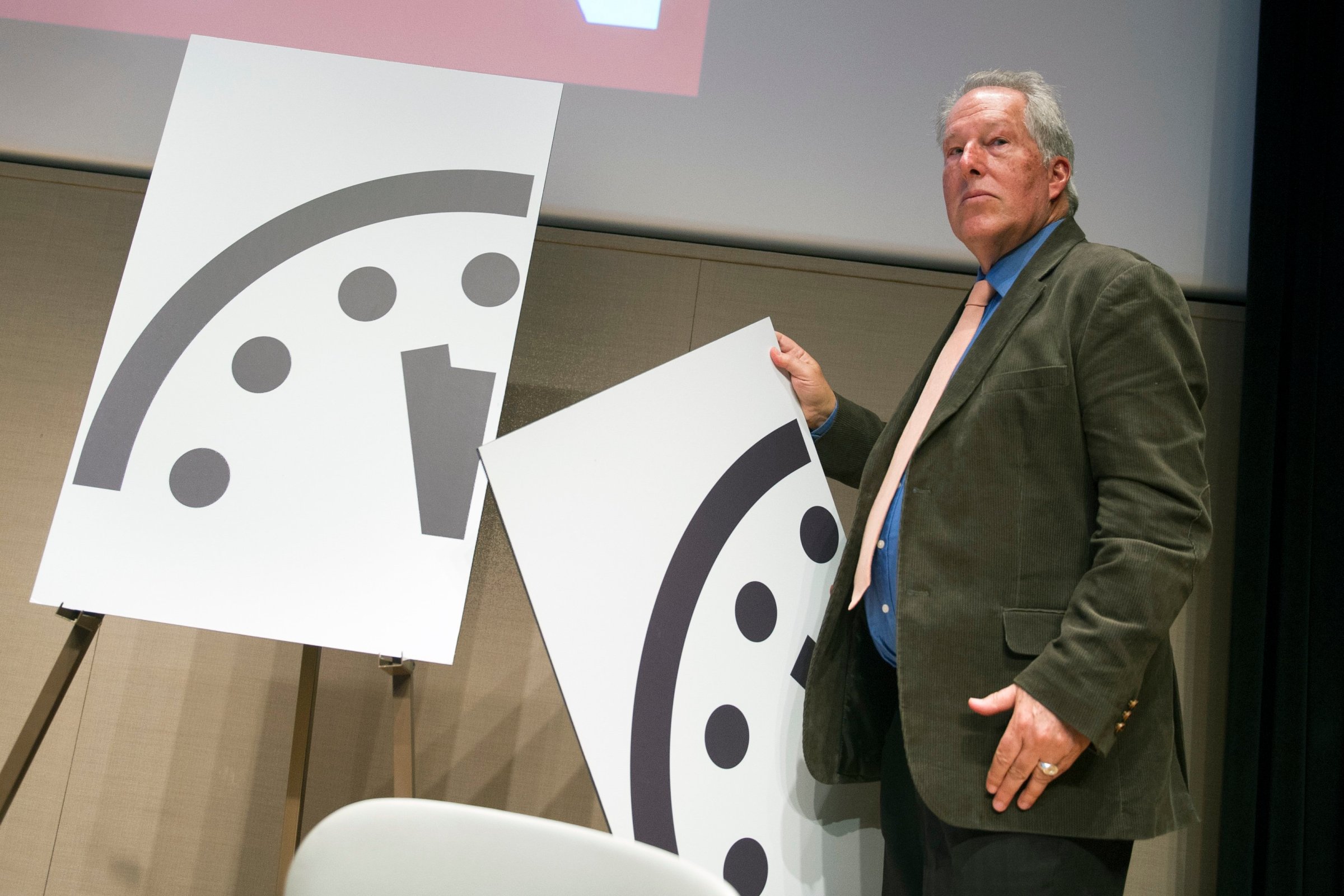
The Doomsday Clock is now two minutes closer to midnight, thanks to the specter of climate change and unchecked nuclear proliferation.
The hands of the symbolic clock, managed by the Bulletin of Atomic Scientists Science and Security Board, were moved forward to 11.57 earlier this week, which means the board thinks “the probability of global catastrophe is very high.” 12.00 signifies the apocalypse.
Originally constructed in 1945 as a predictor of nuclear catastrophe, the clock’s keepers now consider factors like climate change and other scientific or technological threats to humanity as well. The Atomic Scientists Science and Security Board is managed by a board of sponsors that includes 17 Nobel Laureates.
“Today, unchecked climate change and a nuclear arms race resulting from modernization of huge arsenals pose extraordinary and undeniable threats to the continued existence of humanity,” Kennette Benedict, executive director of the Bulletin of the Atomic Scientists, said.
Founded by University of Chicago scientists who worked on the Manhattan Project, The Doomsday Clock has been long considered a metaphor for the vulnerability of the human race.
But the hands of the clock can move forward and backward in time. It was previously set at 3 minutes to midnight in 1984, during a particularly scary moment during the Cold War where communication between the U.S. and the Soviet Union had gone dark. And in 1949, the clock was set at 3 minutes to midnight when the Soviet Union tested their first nuclear device.
The safest point in history seems to have been in 1991, when the clock was at 17 minutes to midnight after the U.S. and Soviet Union agreed to reduce their nuclear arsenals. The closest the Doomsday Clock has ever been to midnight was in 1953, when it reached 2 minutes to midnight after the U.S. tested a H-Bomb for the first time.
To read the entire statement about why the Doomsday Clock stewards believe the world is as close to total catastrophe today as it was at the worst point in the Cold War, click here.
Read next: 5 Things You Need to Know About Obama’s Visit to India
More Must-Reads From TIME
- The 100 Most Influential People of 2024
- The Revolution of Yulia Navalnaya
- 6 Compliments That Land Every Time
- What's the Deal With the Bitcoin Halving?
- If You're Dating Right Now , You're Brave: Column
- The AI That Could Heal a Divided Internet
- Fallout Is a Brilliant Model for the Future of Video Game Adaptations
- Want Weekly Recs on What to Watch, Read, and More? Sign Up for Worth Your Time
Write to Charlotte Alter at charlotte.alter@time.com